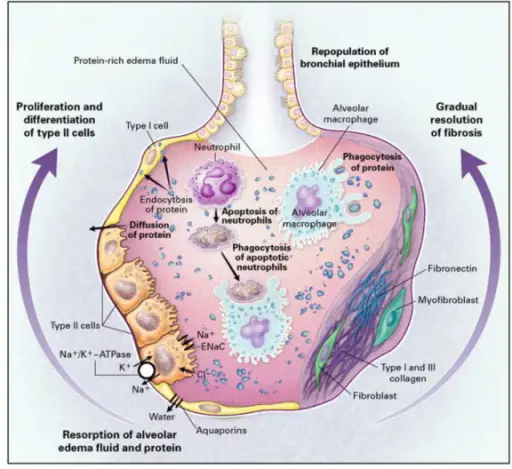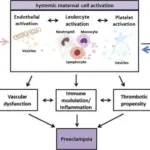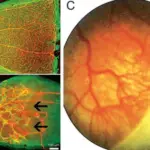Neonatal respiratory distress syndrome is a disease in which a baby’s lungs are not fully developed and cannot provide enough oxygen which causes breathing difficulties. Neonatal respiratory distress syndrome usually affects premature babies. Neonatal respiratory distress syndrome is also called surfactant deficiency lung disease because the lungs are not able to make enough surfactant. Surfactant is a foamy substance that keeps the lungs fully expanded so that newborns can breathe in air once they are born. Neonatal respiratory distress syndrome may be complicated by retinopathy of prematurity bronchopulmonary displasia, necrotizing enterocolitis, intraventricular hemorrhage, or germinal matrix hemorrhage.
What is the Pathology of Neonatal Respiratory Distress Syndrome?
The pathology of neonatal respiratory distress syndrome is:
–Etiology: The cause of neonatal respiratory distress syndrome is a lack of a slippery substance in the lungs called surfactant.
–Genes involved: Mutations in the genes encoding SP-B (SFTPB), SP-C (SFTPC), and ABCA3 (ABCA3) which disrupt surfactant function.
–Pathogenesis: The sequence of events that lead to neonatal respiratory distress syndrome are respiratory bronchioles and alveolar ducts that are poorly supported structures in the immature lung are without surfactant leaving them susceptible to disruption through shear forces. Uncontrolled increases in pressure, such as that exerted during positive pressure resuscitation, can lead to high tidal volumes and over distension, epithelium disruption, and neonatal respiratory distress syndrome.
–Morphologic changes: The morphologic changes involved with neonatal respiratory distress syndrome are waxlike layers of hyaline membrane that line the collapsed alveoli of the lung. In addition, the lungs may show hemorrhage, over distention of airways, and damage to the type I pneumocytes.
How does Neonatal Respiratory Distress Syndrome Present?
Patients with neonatal respiratory distress syndrome are typically male infants. Neonatal respiratory distress syndrome usually develops in the age range of 26-28 weeks gestation. The symptoms, features, and clinical findings associated with neonatal respiratory distress syndrome include: rapid breathing very soon after birth, nasal flaring, chest retractions, and grunting with each breath.
How is Neonatal Respiratory Distress Syndrome Diagnosed?
Neonatal respiratory distress syndrome is diagnosed with a clinical examination by a doctor, which will include radiographic imaging such as a chest X-ray. Other tests such as arterial blood gas analysis may be performed to determine if the newborn has enough oxygen in the blood. An echocardiography may also be performed to assess for heart defects which may be another cause of the newborn’s symptoms.
How is Neonatal Respiratory Distress Syndrome Treated?
Neonatal respiratory distress syndrome is treated by supportive care and respiratory support which includes nasal cannula, continuous positive airway pressure, and surfactant. A ventilator may be necessary for severe neonatal respiratory distress syndrome cases. The patients with neonatal respiratory distress syndrome may also receive intravenous antibiotics.
What is the Prognosis of Neonatal Respiratory Distress Syndrome?
The prognosis of neonatal respiratory distress syndrome is good. The mortality of neonatal respiratory distress syndrome is < 10%. However, severe hypoxemia can result in multiple organ failure and death.



